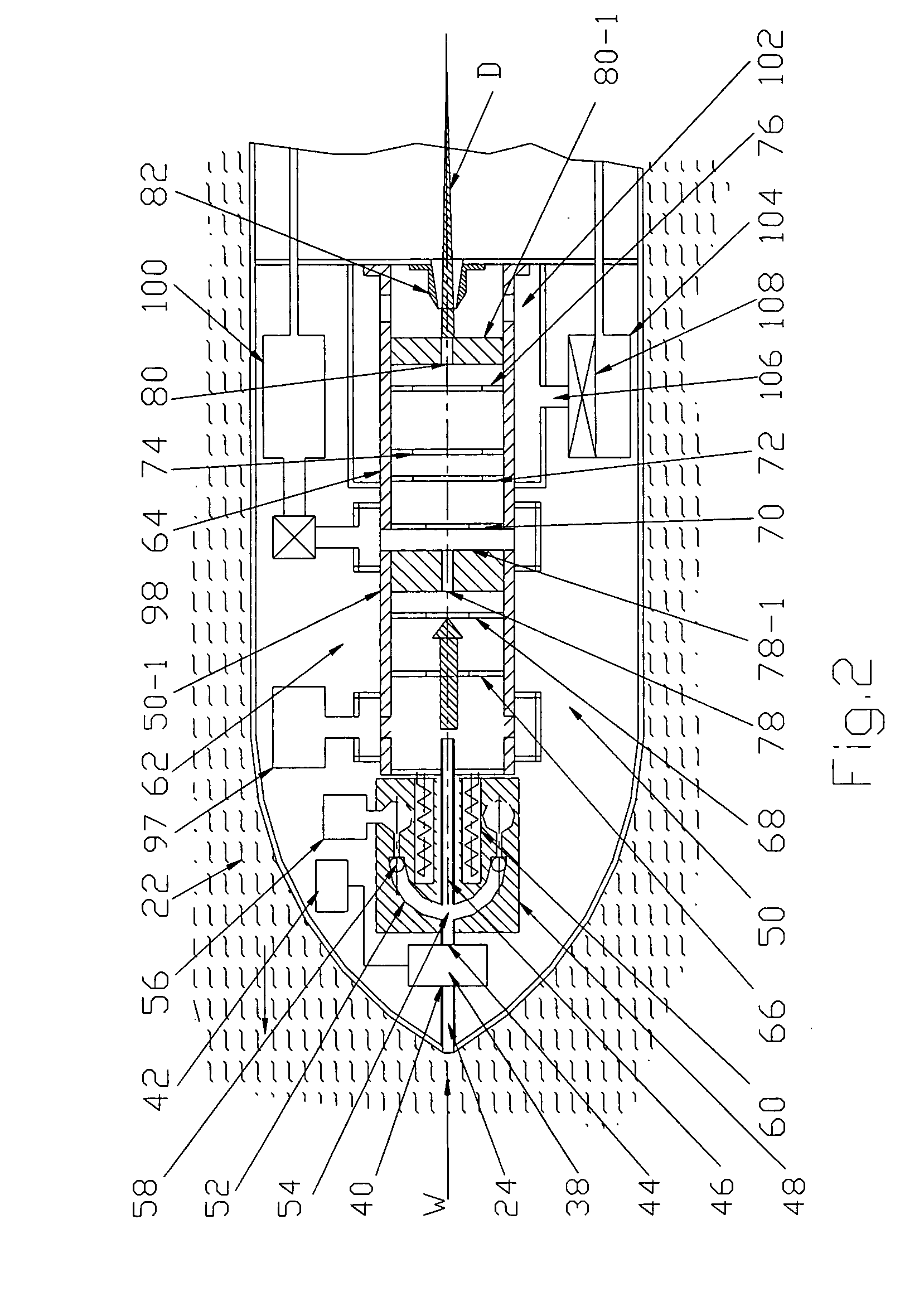It should be noted that static mass spectrometers are static installations which are heavy in weight, complicated in construction, and operation with them requires the use of skilled personnel.
In other words, the
system requires the use of super-conductive magnets which are expensive in cost and large in size.
However, such method and apparatus make interpretation of obtained data more complicated and not easily comprehensible.
A
disadvantage of the device disclosed in U.S. Pat. No. 5,753,909 consists in that this mass spectrometer is based on the selection of specific charged particles and does not show the entire
mass spectrum.
For obtaining the entire spectrum, it is necessary to perform step by step scanning, and this requires an additional time.
This is a typical
system with storage of charged particles, which does not allow a
continuous mode of
mass analysis since it requires some period for de-energization of one of the reflecting devices.
Obviously, the data is difficult to interpret, especially when masses of charged particles are scattered in a wide range so that light charged particles may undergo several reflections while heavy charged particles made only one or two reflections.
However, the above-described
helical-path
quadrupole mass spectrometer, as well as all aforementioned known mass spectrometers of other types, is not very convenient for aerosol applications.
However, the sensitivity of conventional TOF MS is affected by the aforementioned low duty-cycle, meaning only small fraction of charged particles originally in the
continuous flow of charged particles is converted into the charged-particle packets and participates in the registration by the charged-particle detectors.
In all known aerosol TOF MS's, a significant amount of sample material is wasted.
These losses are unavoidable.
Otherwise, it would be impossible to perform selection and tracing of individual particles for which the time-of-flight and, respectively, spectra of masses, have to be determined.
However, in conventional aerosol TOF MS, bunching, i.e., in a process that extracts particles from a continuous charged-
particle flow, is insufficient and therefore in some cases leads to the loss of very important information and hence to decrease in the sensitivity of the TOF-MS as whole.
To increase the
signal-to-
noise ratio, such conventional systems use expensive amplifiers and logistical systems.
Because each packet can contain only a few charged particles of the species of the materials, the experiment has to be repeated many times. So, it is impossible to reach in the condition of the flight the quality of the measurement that is sufficient to identify the aerosol compound using a conventional TOF MS.
In other words, conventional TOF MS's have a limited low
duty cycle, and the authors are not aware of any known means that can increase the
duty cycle above 60%.
However, they cannot reach a high duty-cycle because their TOF MS's annihilate a part of the flow of charged particles by a gating grid [see references 3) and 4)] or deflecting mesh [see reference 5)] during
binary modulation that they converted.
The flow of charged particles sputters and contaminates the modulation grids or meshes and creates secondary electron-,
ion-, or
photon-emission leading to deterioration of the grids.
Furthermore, foreign species introduced in the drift space because of
contamination and
sputtering destruct the detectors and distort the information.
So the conventional TOF-MS's with the pseudo-random binary methods of bunching of the
ion packets can not provide high
duty cycle, have low sensitivity and reliability, and cannot serve properly as monitoring devices for field applications because of the incorrect choice and design of the
ion optics and the irrational bunching strategy.
The disadvantages of the known aerosol TOF MS's make them unsuitable for aforementioned real-time analysis under extreme or critical conditions such a biological
attack or an environmental disaster, e.g., a hazardous leakage or
contamination of water reservoirs in populated areas.
However, ionizers contained in this gas
discharge or
plasma type group are not applicable for aerosol mass spectrometers for a number of reasons.
Some ionizers have short service life, e.g., those with capillary charge.
Others have a very cumbersome and complicated structure.
Thirds have non-adjustable parameters, i.e., they are inapplicable for conditions where masses of particles vary in a wide range, etc.
However, a problem that may occur in application of MALDI processes to
aerosol mass spectrometry is that it would be difficult to preserve mass and charge ratio of particles irradiated or treated by a
laser beam.
As contaminants are deposited on the inner walls of the
ionization chamber, they are also deposited on the exposed surface of the insulating holder member, affecting the resistance value of the insulating holder member.
A common
disadvantage of all these known ionization devices is that they are not applicable for use in an aerosol mass spectrometer operating in real time and either do not allow control of the
residence time of particles while they are ionized in the ionization device, or destroy multimolecular particles which are to be analyzed.
If the
residence time of the particles in the ionization device is not controlled, heavy particles that possess large masses may be subjected to multiple charging.
This will create problems for identification of particles by masses.
On the other hand,
defragmentation of large particles also makes identification of particles by mass more complicated and unacceptable, especially in analysis of particles of a chemical and biological nature.
 Login to View More
Login to View More  Login to View More
Login to View More 


